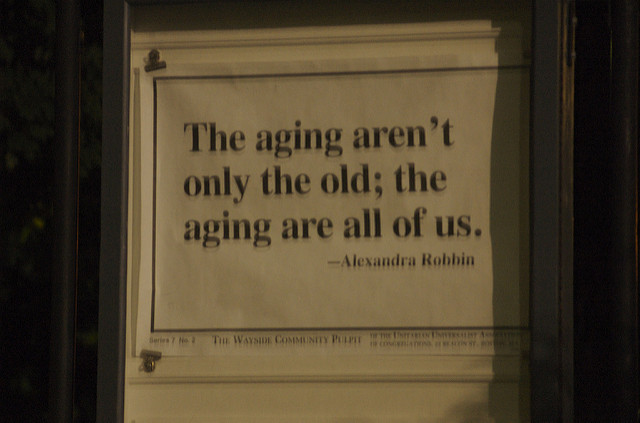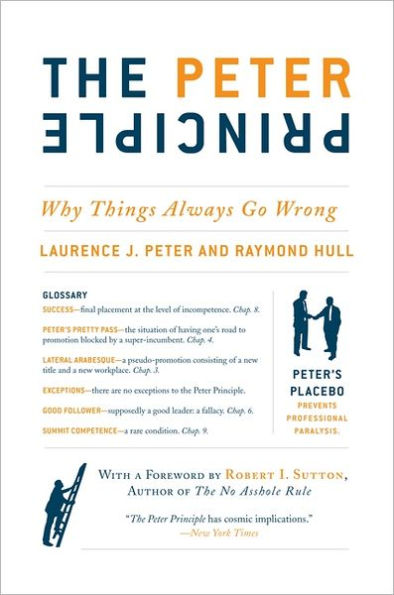|
|
|
Tuesday, December 4th, 2018

In case you hadn’t noticed the fertility rate is dropping, the world’s population is aging and it’s happening in a way that will forever change the workplace.
Back in 2010, Standard & Poor’s predicted that the biggest influence on “the future of national economic health, public finances, and policymaking” will be “the irreversible rate at which the world’s population is aging.”
As usual, our governments at all levels are doing little more than funding studies, wringing their hands and making dire predictions. In all likelihood they will continue doing more of the same, since constructive efforts would require bipartisan cooperation, and politicians aren’t known for their willingness to bite unpopular bullets — as our country’s aging/decrepit infrastructure proves.
Companies, by contrast, are uniquely positioned to change practices and attitudes now. Transformation won’t be easy, but companies that move past today’s preconceptions about older employees and respond and adapt to changing demographics will realize significant dividends, generating new possibilities for financial return and enhancing the lives of their employees and customers.
Companies might be in a better positioned, but rampant cognitive bias, whether unconscious or conscious, often prevails, resulting in a preference for hiring “people like me.”
Soon, the workforce will include people from as many as five generations ranging in age from teenagers to 80-somethings.
Are companies prepared? The short answer is “no.” Aging will affect every aspect of business operations — whether it’s talent recruitment, the structure of compensation and benefits, the development of products and services, how innovation is unlocked, how offices and factories are designed, and even how work is structured — but for some reason, the message just hasn’t gotten through.
So forget companies.
Current bosses, as well as bosses-to-be, have the great advantage of being able to do it now themselves, rather than waiting for their companies to act.
And it’s to their advantage, assuming they want to keeping their teams humming, well-staffed and highly productive.
But, depending on your MAP (mindset, attitude, philosophy™), don’t expect it to happen overnight or minimize the amount of work that may be required.
To get started, click the link at the link. It will take you to a seven part series in the Harvard Business Review called The Aging Workforce. It’s probably the fastest way to wrap your mind around what’s happening in all its complexity — or at least a lot of it.
And join me tomorrow for a closer look at cognitive bias, which affects the entire human race — including you and me.
Image credit: Justin Henry
Posted in Culture, Hiring, Personal Growth, Retention | No Comments »
Tuesday, September 18th, 2018

Yesterday I mentioned the Peter Principle, by Laurence J. Peter, a prominent Canadian education scholar. It prompted a call from a young (23) friend asking how accurate it is now, considering it was written nearly 50 years ago .
It wasn’t that “Ben” disagreed with the premise, especially considering his boss, he just thought that there should be more current information.
And there is. So for Ben and others who wonder, here are links to more current information and research in chronological order.
First is Bob Sutton’s marvelous foreword written for the Principle’s 40th anniversary edition in 2009.
My father loved The Peter Principle because it explained why life could be so maddening—and why everyone around you seems, or is doomed to become, incompetent.
Second, in August, 2014, from Rob Asghar, a good, somewhat depressing, overview of the book, along with a few words of hope.
We’re human, in the end. The Tony Robbins types try to sell us the life-hacks, the superfood diets, the meditation techniques and the mantras to transfigure us from mortal to immortal. That only sets us up to fail in a different and delusional way.
Next, in December, an article in HBR looked at the Principle from the other side — and it only took ten years to happen.
This seems surprising since of course every manager is a subordinate as well. And indeed in The Subordinate’s Predicaments, Case Western Reserve management professor Eric Neilsen and then-doctoral candidate Jan Gypen make that point explicitly.
In April this year, Rodd Wagner described research that proved the Principal was indeed real and ways to circumvent it. Although the research focuses on sales, it is applicable to any career field.
Three professors – Alan Benson of the University of Minnesota, Danielle Li of MIT and Kelly Shue of Yale – analyzed the performance of 53,035 sales employees at 214 American companies from 2005 to 2011. During that time, 1,531 of those sales reps were promoted to become sales managers.
I hope this info (and I’m sure there is plenty more for the searching) is useful to Ben and all those like him, who are either struggling with a very real Peter Principle boss or working hard to avoid becoming one.
Image credit: Barnes and Noble
Posted in Hiring, Motivation, Personal Growth | 1 Comment »
Monday, August 1st, 2016
It’s amazing to me, but looking back over more than a decade of writing I find posts that still impress, with information that is as useful now as when it was written. Golden Oldies is a collection of what I consider some of the best posts during that time.
Visions. Everybody has them — CEOs, entrepreneurs, psychotics, and, of course, politicians (especially politicians). It’s not the visions that are the problem; the problems happen when the visionary’s focus is on purity, instead of pragmatism; as amply illustrated below. Read other Golden Oldies here.
 There is a wonderful post by Kent Lineback at HBR called The Leadership Learning Moment That Wasn’t. In it he tells of blowing a great opportunity because he couldn’t get the other executives in the company to buy into his vision. There is a wonderful post by Kent Lineback at HBR called The Leadership Learning Moment That Wasn’t. In it he tells of blowing a great opportunity because he couldn’t get the other executives in the company to buy into his vision.
“What do you think is going on? I made an important point and everybody yawned and moved on.”
“It was an important point,” he [the consultant] said, “but you didn’t build any bridges.”
Lineback goes on to say that he thought long and hard about the consultant’s words and realized he was right.
“I didn’t build bridges. I didn’t reach out and connect with others on their terms. I talked at them. I had a solution, a beautiful vision. I knew the answer, and I spent my time telling everyone what it was and what the company had to do.
But that didn’t change anything.
I knew he was right. I knew I should do what he said. But I couldn’t debase my perfect vision by turning it into a free-for-all idea jam. Better to stay pure and fall on my sword, a martyr.”
That is one of the great problems of leadership visions, they are the property of one person; one person who will do almost anything to sell the vision—anything except share and modify it.
Leadership visions happen at all levels of a company from the CEO down to the newest supervisor.
It’s a side effect of drinking the leadership Kool-Aid, so you might want to think twice before indulging your thirst.
Image credit: Khürt Williams
Posted in Golden Oldies, Leadership | No Comments »
Tuesday, September 4th, 2012
 Giant corporation, medium company, small biz or startup chances are you have in the past or are working now with someone you can’t stand. Giant corporation, medium company, small biz or startup chances are you have in the past or are working now with someone you can’t stand.
The cause can be anything from annoying habits to seriously bad performance, but the result is the same—it drives you nuts.
HBR provides some good advice on the subject in How to Work with Someone You Hate that is useful to anybody and in non-work situations.
But there is one attitude I’ve relied on for most of my life that has served me well, “consider the source of the comment before considering the comment itself.”
Typically, we do the opposite taking in the words along with any baggage, and allowing them to do their worst.
Whereas, if we consider the source, including who said them, our relationship with that person, respect level, circumstances and context, the impact of what was actually said dissipates completely.
Considering the source is worth sharing with your kids, friends and colleagues.
Over the years I’ve found it takes the bite out of the majority of critiques, criticisms and commentary that fill our days.
Even remembering it late, after the hurt or upset has died down, has put things in perspective more times than I can count.
Try it; you’ll be surprised how much more positive, not to mention peaceful, your world will become.
Flickr image credit: fauxto_digit
Posted in Ducks In A Row, Personal Growth | No Comments »
Monday, July 30th, 2012
 Last week I provided a graphic example of the importance of using capitals when writing; one I believed would be easily remembered and act as a cautionary warning. Last week I provided a graphic example of the importance of using capitals when writing; one I believed would be easily remembered and act as a cautionary warning.
Some call me a fanatic because, whether written or spoken, bad grammar in native English speakers makes me nuts, but I believe it’s a reasonable level of fanaticism.
I do expect people who graduated high school or the equivalent, let alone college, to know the difference between to, too and two, it’s and its and lose and loose; nor do I shrug it off when they insert a comma every three words for no apparent reason.
This is especially true in business where I also assume (fantasize?) that they will at least spell check the email or document and do a quick re-read to catch typos like form instead of from.
But I am not a perfectionist as is Kyle Wiens, who won’t hire for any position in his company—from writer to programmer—if they can’t pass a grammar test; nor do I agree with most of those who voiced the opposite in comments.
Moreover, while I believe that my grammar-in-action rates in the high nineties, I doubt I could pass the grammar test Wiens uses when interviewing.
Just because I use grammar correctly doesn’t mean I know all the rules behind doing so—nor do I care.
If you consider all this as lacking much substance consider that Wiens’ post, published a week ago by the Harvard Business Review, has garnered in excess of 2000-and-counting comments.
Interesting argument, but to me, Wiens and his detractors are perfect examples of what’s really wrong in the workplace these days.
Too many managers and workers are evangelizing a black and white, zero-tolerance policy about [whatever] and then doing their best to enforce it within their world.
Extremism leaves little room for being reasonable, which is the approach taken by Madonnahamel when he says, “There’s a difference between being anal and being professional.”
Flickr image credit: g_kat26
Posted in Communication | No Comments »
Monday, April 9th, 2012
In an interesting post at HBR Peter Bregman talks about attending a conference as yourself instead of as your role, although roles are far easier, because we feel more comfortable and safer.
It’s why, within a minute of meeting someone, we begin to define ourselves by our roles, our status, and our relationships to others. We think it’s because other people need that information to know us.
But standing alone at that party I realized I’d been fooling myself. Other people don’t need that information to know me. I need that information to know myself.
I would go further and suggest that you attend life as yourself as opposed to your roles.
Roles make it easy to interact with strangers, but they also allow us to hide from our bosses, colleagues and even serve as barriers between us and our families—but the greatest disservice roles perform is allowing us to hide from ourselves.
If you define yourself internally by your roles you preclude exploration and the chance to discover new depths, travel new paths and learn what you are really capable of.
Putting yourself first and your roles second is scary and makes you vulnerable, but it also opens the door to a myriad of possibilities.
Flickr image credit: sxc.hu
Posted in Personal Growth | No Comments »
Wednesday, March 28th, 2012
 Way back in 2006 I was preaching the value of unwiring and I’ve written often on the fallacy of multitasking and the resultant diminishing productivity and creativity. Way back in 2006 I was preaching the value of unwiring and I’ve written often on the fallacy of multitasking and the resultant diminishing productivity and creativity.
A new post at HBR is titled The Magic of Doing One Thing at a Time and connects the always-on, multitasking approach to high burn-out levels in the workforce.
What we’ve lost, above all, are stopping points, finish lines and boundaries. Technology has blurred them beyond recognition. Wherever we go, our work follows us, on our digital devices, ever insistent and intrusive. It’s like an itch we can’t resist scratching, even though scratching invariably makes it worse.
Of nearly 500 comments, almost all of those I scanned were in agreement.
83% of the US population owns a cell and nearly half of them are smartphones, but there are unlikely holdouts.
Nicholas Carr, author of “The Shallows: What the Internet Is Doing to Our Brains,” argues in the book that because of the brain’s neuroplasticity, Web surfing rewires people to be more adept at perfunctory multitasking, but diminishes the ability to sustain focus and think interpretatively.
It’s not just an age thing; younger users voice similar concerns.
Jim Harig, 24, a senior evaluation analyst at Ernst & Young in Chicago… Mr. Harig said he worried about distractibility and regarded most applications as time wasters instead of productivity boosters. “I don’t want to end up falling victim to the smartphone, where I dive in and get lost for hours at a time.”
There is enormous peer pressure on both topics—multitasking has become a competitive sport (watch for the first World Multitasking Championship) as have smartphones—and peer pressure is no easier to combat as an adult than it was as a teen.
However, you do have a choice and, hopefully, your choice will reflect your long-term health and success as opposed to the short-term goal of fitting in or being cool.
Flickr image credit: Lisa Risager
Posted in Personal Growth | No Comments »
Saturday, January 28th, 2012
 Today is a varied bag of stuff you should know—or at least know about. Today is a varied bag of stuff you should know—or at least know about.
Our first entry shouldn’t come as a surprise. Trust in business leaders is at an all-time low; it still ranks above trust in government leaders—but not by much.
In today’s multi-tasking, wired, always connected, omg-I-might-miss-something world here’s help on training yourself and others to focus.
“Unmentionables” has a whole new meaning and it can damage or even destroy your organization; once again, the problem and the solution are found in your culture.
Now for the fun stuff.
Millions of people base their buying decisions on peer reviews, AKA, the “wisdom of crowds,” but how wise is it when the “wisdom” is for sale?
Heads up! This is a rant. In today’s world of ‘citizen journalists’ I may wince at the misused words, but given our educational system I’m not surprised. However, when I see them in major online media sites such as Vator.tv I get really annoyed, as I did yesterday at this sentence, “Zynga is not loosing steam when it comes to entering 2012 with a whole new lineup of games for its users to get addicted to.’ I’m not referring to the fact that the sentence ends in a preposition, that’s way too common to cause a reaction. But if Zynga does start ‘loosing steam’ I at least hope the water isn’t too polluted.
This final entry should probably be called something like ‘when disparate things converge’. If you happen to have abundant disposable income and require a hospital stay shop around; you may be surprised at what’s available.
Flickr image credit: pedroelcarvalho
Posted in Expand Your Mind | No Comments »
Saturday, September 24th, 2011

I owe my Saturday readers an apology. Expand Your Mind was absent last week and I have no excuse; worse, I have to admit I just plain forgot. That is embarrassing. I hope today makes up for it.
A rude awakening for all the companies and managers who believe they can treat their people any way they choose comes from an Aflac survey-based report saying otherwise.
77 percent of adults employed full/part time, and not currently self-employed, stated they would leave their current position to become an independent entrepreneur.
However, PeopleMetric’s 2011 survey on employee engagement says the opposite when compared to 2007.
…more employees intend to stay with their employer, feel motivated to put forth extra effort, recommend their companies as a great place to work, and say they love their current organization.
What’s the difference; why such disparate results?
More research from Harvard shows that what excites and engages people has nothing to do with money and everything to do with managers (you knew that).
According to recent research, the single most important factor is simply a sense of making progress on meaningful work.
Next, two excellent survey-based articles about women and work.
First, research from Harvard Business Review, looks at the factors that impact both women and men when competing.
…how women and men perform at work may be strongly linked to the gender of the person they are competing against.
And from McKinsey comes advice based on feedback that focuses on changing deeply embedded attitudes.
…a survey we conducted earlier this year indicated that although a majority of women who make it to senior roles have a real desire to lead, few think they have meaningful support to do so, and even fewer think they’re in line to move up.
Finally, a word about the poster boy of engagement, Richard Branson.
He simply pursues his vision of excellence in whatever he does, leaving others to decide whether he is working or playing. To him, he is always doing both.
Not a bad way to live!
Flickr image credit: pedroelcarvalho
Posted in Expand Your Mind | No Comments »
|
 Subscribe to
Subscribe to
MAPping Company Success
About Miki 
Clarify your exec summary, website, etc.
Have a quick question or just want to chat? Feel free to write or call me at 360.335.8054
The 12 Ingredients of a Fillable Req
CheatSheet for InterviewERS
CheatSheet for InterviewEEs™
Give your mind a rest. Here are 4 quick ways to get rid of kinks, break a logjam or juice your creativity!
Creative mousing
Bubblewrap!
Animal innovation
Brain teaser
The latest disaster is here at home; donate to the East Coast recovery efforts now!
Text REDCROSS to 90999 to make a $10 donation or call 00.733.2767. $10 really really does make a difference and you'll never miss it.
And always donate what you can whenever you can
The following accept cash and in-kind donations: Doctors Without Borders, UNICEF, Red Cross, World Food Program, Save the Children
*/
?>About Miki
About KG
Clarify your exec summary, website, marketing collateral, etc.
Have a question or just want to chat @ no cost? Feel free to write
Download useful assistance now.
Entrepreneurs face difficulties that are hard for most people to imagine, let alone understand. You can find anonymous help and connections that do understand at 7 cups of tea.
Crises never end.
$10 really does make a difference and you’ll never miss it,
while $10 a month has exponential power.
Always donate what you can whenever you can.
The following accept cash and in-kind donations:
|






 There is a wonderful post by Kent Lineback at HBR called
There is a wonderful post by Kent Lineback at HBR called  Giant corporation, medium company, small biz or startup chances are you have in the past or are working now with someone you can’t stand.
Giant corporation, medium company, small biz or startup chances are you have in the past or are working now with someone you can’t stand. Last week I provided a graphic example of the
Last week I provided a graphic example of the 
 Way back in 2006 I was preaching the
Way back in 2006 I was preaching the  Today is a varied bag of stuff you should know—or at least know about.
Today is a varied bag of stuff you should know—or at least know about.
